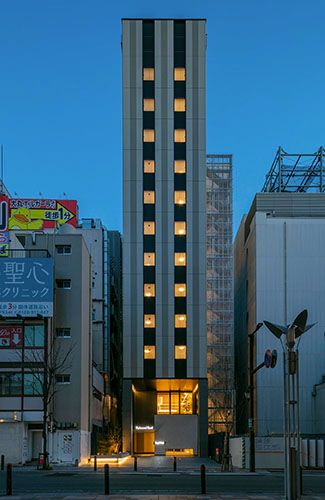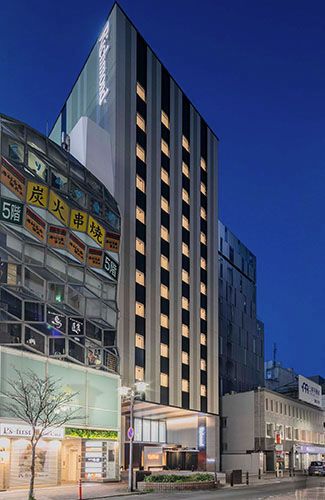Established in 2004, RNT Hotels runs more than 40 hotels throughout Japan under the Richmond Hotels brand. The group also manages restaurants, cafeterias and coffee shops. Opened in 2019, the Richmond Hotel Tenjin Nishi Dori is a new construction in Fukuoka City on the north coast of Kyushu Island.
RNT’s design brief for the interior specifically asked for the use of carpet tiles, but called for a finished look that doesn’t have the obvious square pattern of carpet tiles. They also requested an original design with flooring that would provide superior comfort underfoot, durability and texture. To give the hotel a uniquely local flavour, RNT also wanted to use the five colours of Hakata-ori – a traditional Japanese textile produced in Fukuoka for more than seven centuries – as inspiration.
Originally Hakata-ori textiles were only used to make obi, the colourful sash that is tied around the waist when wearing a kimono or other traditional Japanese clothing. Today, Hakata-ori is also used to make handbags, scarves and other accessories. The colours that are interwoven to make the textile each have a significant meaning, for instance, red means courtesy, happiness, and prosperity while blue means honour, calmness and peace.
With this in mind, RNT Hotels called upon the skills of Naoki Kimura, chief of the design department at the Kyushu office of the Takenaka Corporation. A family business for more than four centuries, it began as a small carpentry firm building wood-framed temples and is continuing the traditions of Japanese master builders today. Through his work, Mr Kimura hopes to benefit society by passing on the best possible work for future generations: “We want to contribute to the sustainable development of society by creating architectural space that is in harmony with the environment. Design starts from drawing a single line, but it makes a huge contribution to our urban lives.” The Richmond Hotel Tenjin Nishi Dori complies with the requirements of Japan’s recently passed Building Energy Efficiency Act, which sets limits on building efficiency and requires the building to be certified after construction.
The Richmond Hotel Tenjin Nishi Dori in Fukuoka City, Japan
The Richmond Hotel Tenjin Nishi Dori in Fukuoka City, Japan
The Richmond Hotel Tenjin Nishi Dori in Fukuoka City, Japan
Thus it was apt that Interface floors, all of which are carbon neutral, were selected for the Richmond Hotel Tenjin Nishi Dori. As a result of our longstanding innovation, Interface carpet tiles have the lightest carbon footprint in the industry based on publicly available data, and as of 2018, we were the first global flooring manufacturer to make all our products carbon neutral throughout their full product life cycle. The choice of Interface Carbon Neutral Floors™ for the Richmond Hotel Tenjin Nishi Dori prevented 14 tonnes of carbon emissions – the emissions as a car travelling roughly 55,000 km or 1.4 times around the circumference of the earth – from going into the atmosphere.
Apart from Interface’s suitability for this project as a world-leading carpet tile manufacturer, the Takenaka Corporation chose to use our products because creating texture and matching the five colours of Hakata-ori textiles were a priority for their RNT Hotels.
“RNT made a final decision based on design, but durability and maintenance were important too,” Mr Kimura added. “Good Natured, the chosen carpet collection used in corridors, has a complex pattern so wear cannot be seen. As the corridor is wide, the pattern looks very beautiful.”
For Mr Kimura, one thing that stood out working with Interface and our dealer partner Kawashima Selkon was our tireless delivery of various floor designs and sample tiles.
RNT Hotels wanted to create a space with an urban, residential feel that would appeal to female guests and tourists — a modern, spacious hotel that is nothing like the cramped business hotels seen in many Japanese cities. To achieve this Mr Kimura proposed a relaxing interior where people can feel at home. “We carefully examined the dimensions such as ceiling height and corridor width in order to make people feel comfortable.” It was also important to consider the well-being of staff, so a generously-sized staff room with windows — which is not always the case — was incorporated into the design.
The Good Natured collection was installed in the hotel’s corridors, with each floor featuring either a red, blue or green accented design that closely matches Hakata-ori textiles. Good Natured emulates the natural flow of a tree’s spreading roots and climbing bark, reaching up through branches into a leafy canopy. The collection is made up of five different patterns that can be used together or alone to create seamless, earthy pathways and large scale designs.
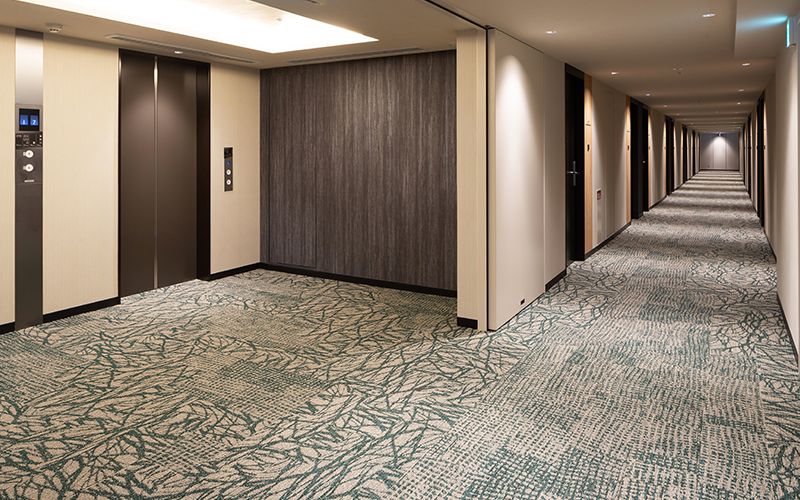
On the lower floors of the Richmond Hotel Tenjin Nishi Dori, organic patterned tiles from the Good Natured collection blend seamlessly into one another to recreate the design and shape of the uniquely Fukuokan Hakata-ori sash, with green carpet symbolising the earth.
In the corridors of the Richmond Hotel Tenjin Nishi Dori, these organic, intertwined patterns were used by Mr Kimura and his team to mimic the patterns seen in Hakata-ori: “We created woven patterns and stripes using linear and curved lines in three different colours. Blue carpets, used in the top three floors, represent the sky, while red carpets symbolising tree trunks line the middle floors. And for the lower floors, we’ve used green carpets to allude to the earth.”
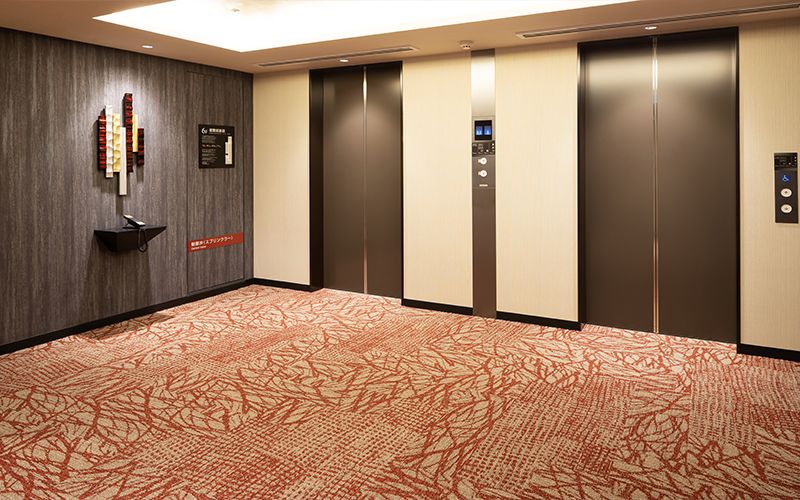
For the middle floors, red carpets are a nod to majestic trees.
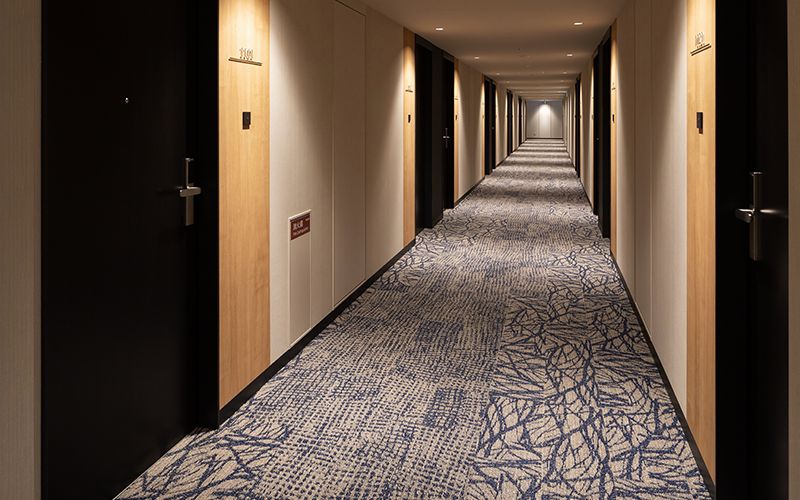
On the upper floors, blue represents the sky, completing a subtle tribute to the natural landscape.
And so guests at the Richmond Hotel Tenjin Nishi Dori can look forward to experiencing a beautiful homage to Hakata-ori – a gem of a tradition that’s unique to Fukuoka alone. By designing spaces that work in harmony with the environment, the Takenaka Corporation has created a truly peaceful home away from home where guests can escape the bustle of city life.

